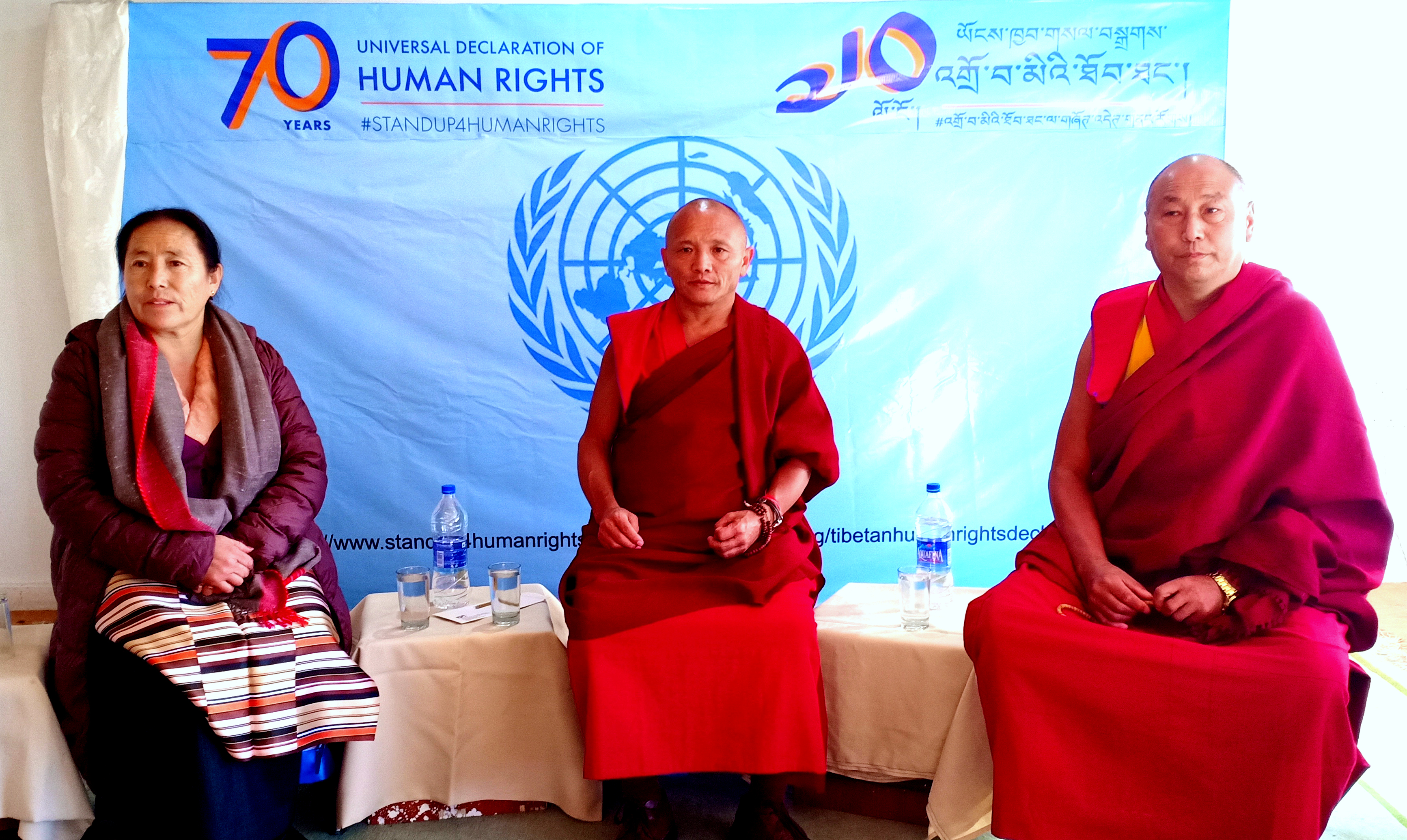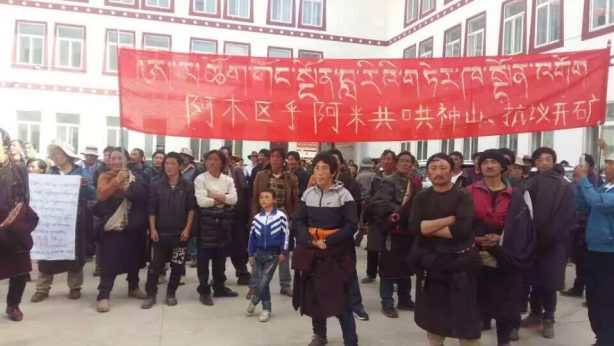New Tibetan language website on Universal Declaration of Human Rights

The Tibetan Centre for Human Rights and Democracy (TCHRD) today unveiled a new Tibetan language website on the Universal Declaration of Human Rights (UDHR) at an event held at the conference hall of Hotel Tibet, Dharamshala, India.
The website honours the memory and legacy of ten monks from Drepung Monastery, also known as ‘Group of Ten’, who were tortured and imprisoned for distributing the Tibetan translation of UDHR in the Tibetan capital Lhasa.
As the world celebrates the 70th anniversary of the adoption of UDHR, it is imperative that different voices and histories are represented to highlight the past and ongoing struggles waged by different communities and cultures to make UDHR a reality for all.
30 November marks the 30th anniversary of the sentencing of ten Tibetan monks for distributing Tibetan translation of the Universal Declaration of Human Rights in the Tibetan capital Lhasa in 1988. The Chinese authorities convicted the monks of producing ‘reactionary literature’ and ‘venomously slandering China’s socialist system’ sentencing the monks to varying prison terms of 5 years to 19 years.
The chief guests at the event, Ven. Ngawang Delek and Ven. Ngawang Woeber, were among the peaceful demonstrators of the 1987 protest in Lhasa. Mrs. Lhakpa Dolma, wife of Jampel Monlam who was a member of ‘Group of Ten’ sentenced to 5 years prison term for translating and printing UDHR into Tibetan using carved wooden blocks.
“Even though we did not have proper equipment and facility to have banners and Tibetan flags, however, we drew Tibetan national flag on clothes and prepared handwritten banners calling for ‘Free Tibet’, “Tibet belongs to Tibetans’ and “May His Holiness the Dalai Lama live for 10000 years’ said Ven. Ngawang Delek. “Along with me and several other Drepung monks, we secretly planned a peaceful demonstration and took to the streets of Lhasa on 27 September 1987. We were then detained for a few months. My cousin Jamphel Tsering was also among the ‘Group of Ten’. He was sentenced to 5 years and was released after the completion of his prison term. Nevertheless, he also took part in the 2008 uprising and was arbitrarily detained for a few months.”
Mrs Lhakpa Dolma said “Jamphel Monlam would often tell that even though he spent 5 years in Chinese prison and underwent severe torture but he never really faced any health complications and it is because that he would always picture His Holiness the Dalai Lama in his mind when the torture equipment was used on him by the prison authorities and because of which he was able to tolerate the pain.”
Former political prisoner Ven. Ngawang Woeber said, “Chinese government’s rhetoric of protecting the religious freedom of Tibetans inside Tibet is nothing but a ploy to hoodwink the international community. The reality is that Chinese authorities extensively control the monasteries in Tibet. Enrolment of monks is strictly limited to 450. For instance, decades have passed but there are still only 450 monks at Drepung Monastery and children below 18 years of age are not allowed to join the monastery. Therefore, it is clear that there is no freedom of religion in Tibet.”
TCHRD staff Mr. Ngawang Namdul introduced the new Tibetan language website to a packed conference hall comprising the representatives of different Tibetan organisations, institutions, students and news reporters. The new Tibetan language website on UDHR is available here.


